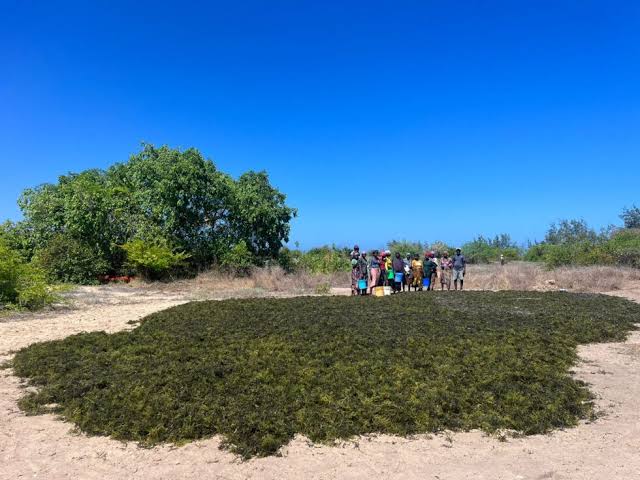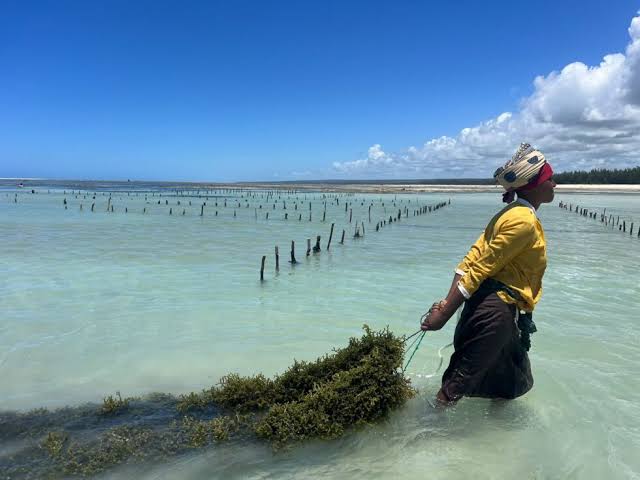The role of seaweed in absorbing atmospheric carbon is debated, but it remains valuable for other reasons.
Mozambique, with its 2,700 km coastline and vulnerability to tropical cyclones, faces significant climate challenges. Recent years have seen devastating storms, floods, and droughts, all exacerbated by climate change, impacting thousands and resulting in numerous fatalities in this southern African nation.
In 2021, the Oceanographic Institute of Mozambique (InOM) initiated a seaweed farming pilot project in the northern region. Supported by Selt Marine Mozambique—a subsidiary of the Tunisian company Selt Marine Group specializing in seaweed farming and processing—the project aims to combat climate change, enhance marine biodiversity, and support local fisheries.

The project began by identifying suitable ocean sites and selecting the best seaweed species for cultivation. It trained around 100 local residents, primarily women, in farming techniques, which involve setting stakes at regular intervals and attaching seaweed to wires and nets. This setup process takes about 5–7 days. Over the next 60 days, participants work with InOM teams to monitor growth, identify diseases, and clear harmful algae from the farms twice a week.
The project’s environmental potential lies in seaweed’s ability to remove carbon dioxide from the atmosphere by converting it into organic matter. The Intergovernmental Panel on Climate Change emphasizes that removing 1,000 gigatonnes of carbon dioxide—almost half of human emissions since the Industrial Revolution—is necessary this century to limit global warming to 1.5°C.
Seaweed has several advantages for carbon capture, growing rapidly and sequestering up to 20 times more carbon per acre than terrestrial forests. It currently covers 3.4 million square kilometers of ocean and avoids the risk of burning, unlike forests.

A 2016 study estimated that seaweed captures around 200 million tonnes of carbon dioxide annually, about half of Australia’s yearly emissions.
Mozambique, with its extensive coastline, has potential for large-scale seaweed farming. However, challenges such as ocean warming and diseases like ice-ice, which can affect seaweed, need addressing. Researchers suggest mitigating these risks through careful site selection, regular field maintenance, and farming techniques like the “bottom system,” which reduces sun exposure.
Some researchers highlight significant limitations in seaweed’s ability to capture large amounts of carbon. A 2023 study found that insufficient iron in the ocean might hinder seaweed growth, while another study revealed that seaweed could be a net carbon emitter, releasing up to 20 tonnes of carbon per square kilometer annually due to increased carbon from organisms benefiting from seaweed.

Despite these concerns, seaweed has a substantial commercial market, valued at $10.66 billion in 2024, with growing use in food, cosmetics, and pharmaceuticals. The InOM project in Mozambique, though still in early stages, has collected 1.3 tonnes of seaweed since 2023. Local workers have benefited financially, though the project faces challenges like high costs and funding issues. The initiative has also enhanced marine biodiversity.
Overall, while seaweed farming offers local benefits and environmental advantages, its potential as a significant tool for climate change mitigation remains uncertain.


